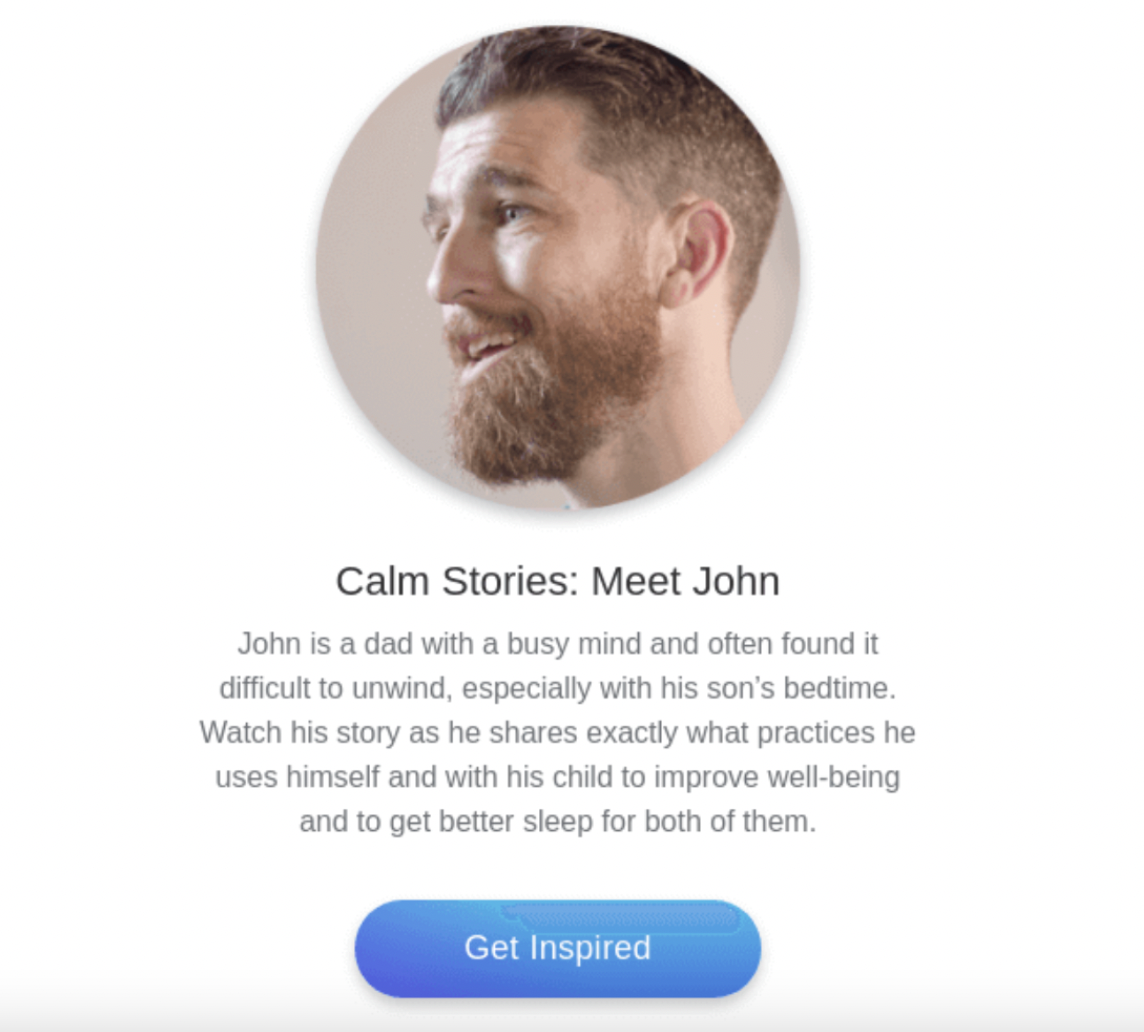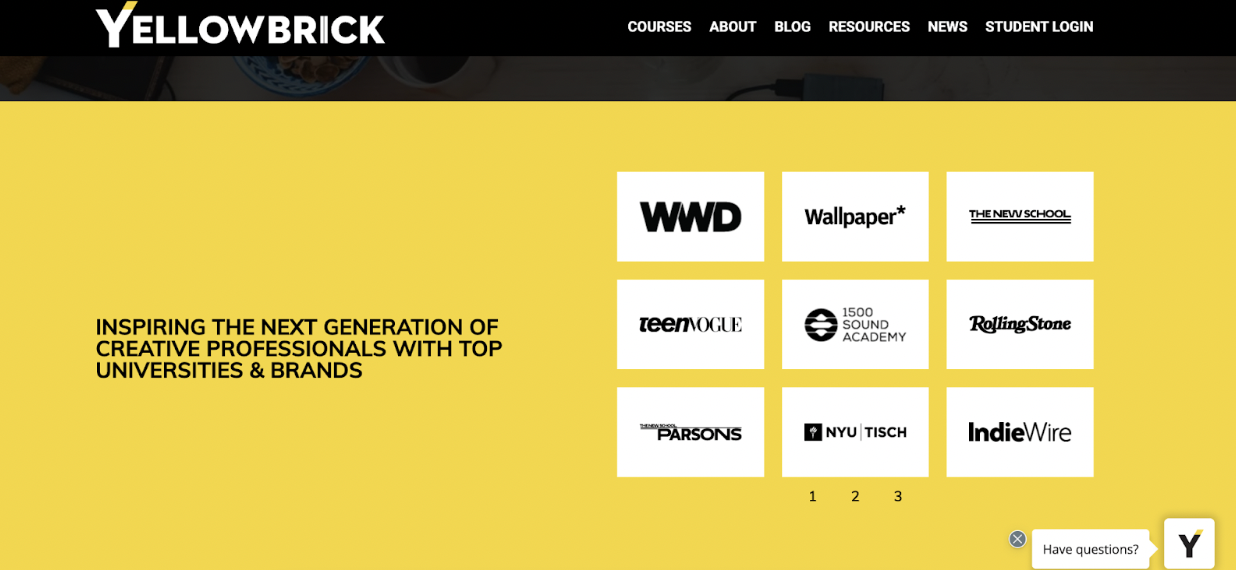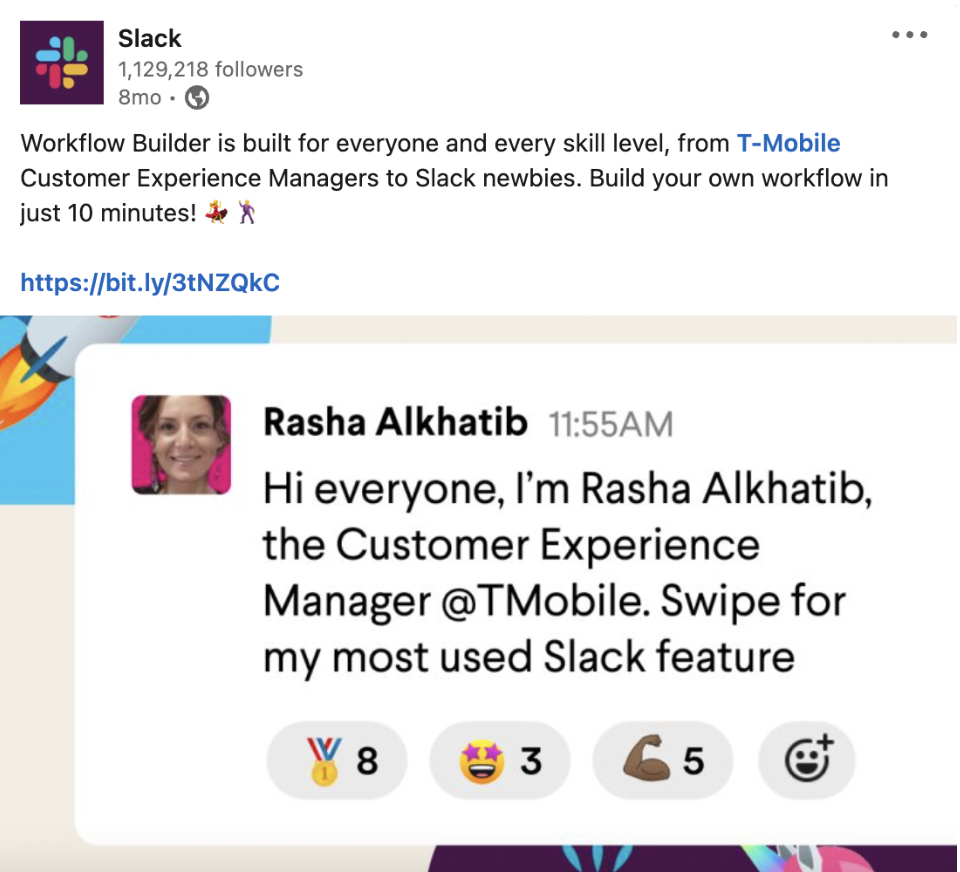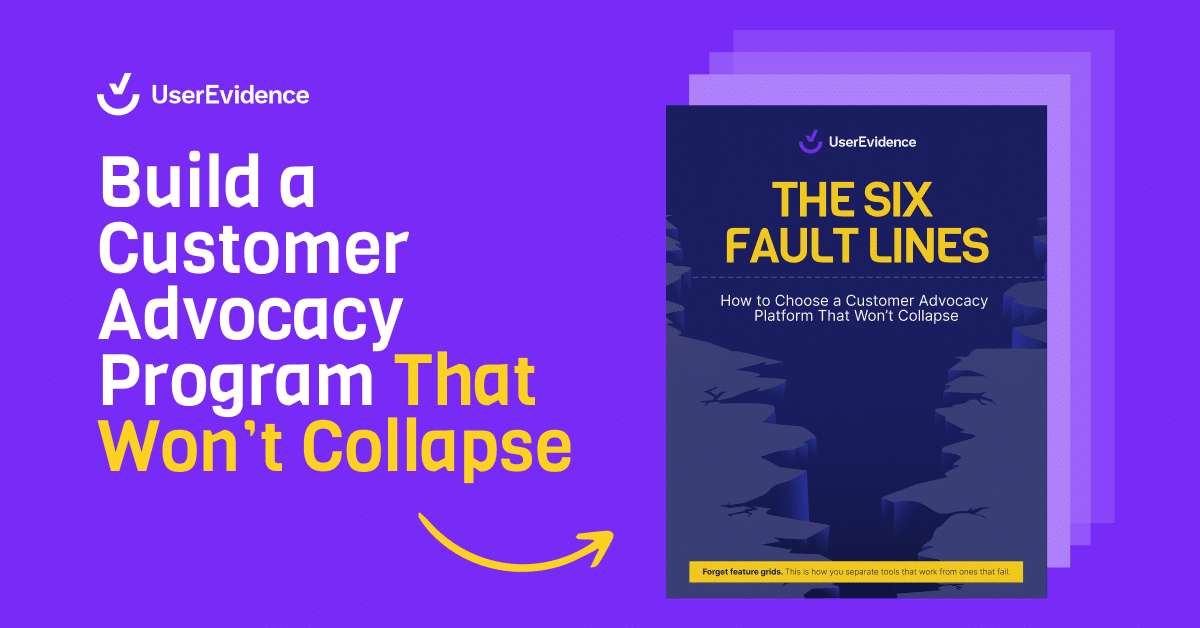With Q4 here already (we know — where did the time go? ), it’s prime time to start preparing for the new year. With planning for 2023 in full swing, it’s time to start asking those all-important questions: What will your marketing budget look like? What type of content will you develop? Are you stepping into new markets or doubling down on the verticals you’re currently targeting? No matter what your plan is for 2023, testimonial marketing will help fortify your product marketing initiatives to drive meaningful conversations with leads and ultimately generate revenue.
But what is testimonial marketing? And why should you be prioritizing it throughout your marketing efforts in 2023? Below, we’re doing a deep dive into one of today’s most powerful marketing tactics.
What’s testimonial marketing?
In short, testimonial marketing simply means that your marketing collateral includes strategically placed testimonials from your existing customers showcasing their experience and the benefits they gain with your business and your products. This works via social proof, or the idea that customers make purchasing decisions based on the behaviors of their peers.
Social proof acts as one of the most effective forms of marketing — just think of the last time you opened Netflix to choose a show to binge. More likely than not, the first thing you thought of was a recommendation from a friend, family member, or coworker urging you to watch their latest favorite show! Testimonial marketing uses this same form of positive peer influence digitally, harnessing your customers’ positive reviews and experiences to capture the attention of other potential buyers online.
Why testimonial marketing works
So, maybe you did end up watching the new Game of Thrones spin-off because a coworker raved about the show during your coffee break a few weeks ago. But how can you be sure the same methodology would work for your B2B marketing strategies? Instead of your buyers hearing of your product over coffee, they’re seeing positive reviews on LinkedIn, G2, Gartner, and elsewhere. Or, maybe they’re finding those reviews on your landing pages, and across your website, encouraging them to sign up for a free trial or book a demo. Perhaps they’re even encountering strong testimonials within your email nurture campaigns. Better yet, they’re seeing testimonials in all of these locations, encouraging them to sign up to gain the same successes for themselves.
When conversion rates increase by 67% after customers see reviews, it’s clear that testimonial marketing has a direct impact on your business’s ability to bring in leads. If those testimonials are placed throughout your marketing collateral and website, you’re increasing the likelihood of conversion in multiple locations — plus seeing positive reviews frequently only works to reinforce the quality of your brand and your products. Testimonial marketing is so effective because it provides tangible, third-party evidence that backs up your sales claims, making your brand appear more trustworthy to buyers. Sounds like a solid win, right?
Where to use testimonial marketing
The key to getting the most out of testimonial marketing lies in knowing where to place your testimonials to make the most impact. Using them across multiple channels allows you to capture the buyer’s attention at multiple points, emphasizing the efficacy of your product. If you’re just getting started with testimonial marketing, there are three key places you should be focusing on:
Email campaigns
More than likely, you’ve already got a few email nurture campaigns in place tailored to specific buyer personas or ICPs, with plans to create and execute more. Lead nurturing through email marketing is a key piece of any B2B business’s marketing strategy — so optimizing this channel with testimonial marketing only makes sense. You can easily add quotes and reviews to existing email campaigns by strategically placing them above or below the CTA. This encourages leads to click on your CTA to discover the same benefits they’re seeing others gain from your product.
You could even create an entire email campaign around your testimonial marketing, like the meditation app Calm. Calm created a campaign highlighting a variety of look-alike users to their typical buyer personas: busy parents, stressed employees, anxious teens, and more. This campaign showcased how everyday users — like the reader — get the most out of Calm, easing their stress through the app. Check out an example of this below.

Landing pages
Testimonial marketing also works great for landing pages. You’ve already got several landing pages in place, whether it’s a page to download an eBook or a simple page highlighting your product’s features and encouraging leads to book a demo. You can easily add quotes, reviews, and even logos to these pages to increase your conversions. Just like an email, placing testimonials near your CTA encourages leads to click.
If you don’t have quotes readily available, simply placing logos of some of your biggest, most recognizable customers on your website can increase your brand’s perceived trustworthiness. See how Yellowbrick encourages readers to use their product by adding logos to their website’s homepage:

Instead of including quotes, the logos of big-name customers speak for themselves. This communicates that if Yellowbrick works well for massive brands like Teen Vogue and Rolling Stone, then you should try it out and see how powerful it could be for you.
Social media
You’re already using social media to capture the attention of potential buyers. Your social media presence increases brand awareness and gives new buyers a sense for your value proposition and your product or service. Adding testimonials to social posts can enhance the claims you’re already making on social media, and emphasize the partnerships you have with your existing customers.
Major internal workforce communication tool Slack does just this, highlighting some of their biggest customers’ positive experiences on LinkedIn. Between other posts, Slack includes testimonials and favorite features of big-name clients, like T-Mobile. The post below is pretty compelling, huh?

Final thoughts
Using testimonial marketing across multiple channels allows you to highlight your product’s features and its ability to solve those pain points for existing users. Testimonials are a form of social proof, and influence potential clients towards purchasing your product. If you aren’t already crafting a strategy for how to do this at your organization, the time is now. ⏱️
Start capturing testimonials to power your 2023 marketing strategy with UserEvidence. Book your demo today.



